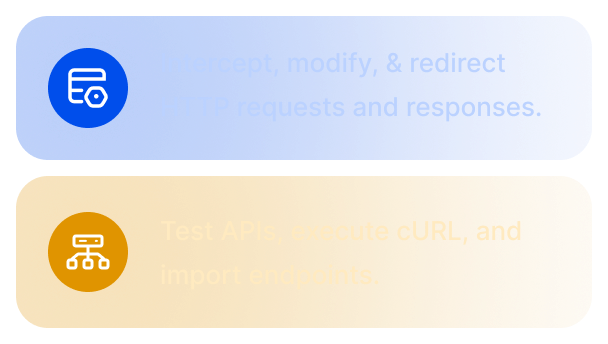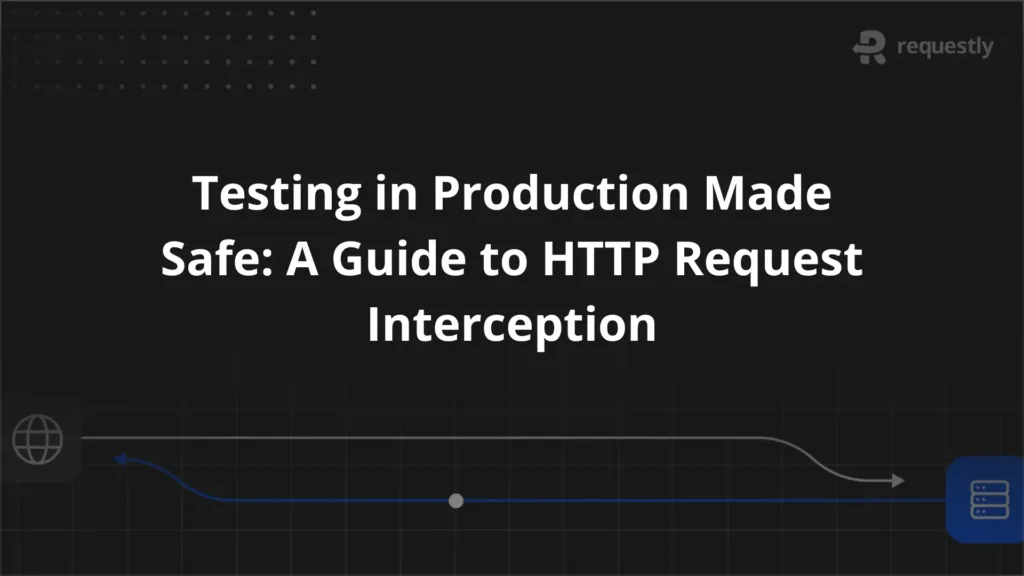The Ultimate Guide to API Integration Tools


API integration tools help streamline the process of connecting different applications, services, and databases, enabling them to communicate and share data seamlessly. Whether you’re automating workflows, improving efficiency, or scaling your business, API integration tools play a vital role in bridging the gap between systems.
This article explores API integration tools in-depth, covering their features, benefits, types, popular options, and best practices, as well as how to choose the right solution for your organization.
Understanding API Integration Tools
API integration tools are software platforms or services that help businesses and developers connect different applications, services, and systems via APIs (Application Programming Interfaces). APIs act as bridges, allowing different software systems to communicate with each other, exchange data, and execute functions.
These tools simplify the process of API management by providing features such as pre-built connectors, visual workflow builders, data transformation, security, and error handling, making it easier for developers and businesses to integrate various applications.
For instance, imagine an e-commerce platform needing to connect with a payment gateway and a customer support system. An API integration tool enables the seamless flow of data between these systems, improving efficiency and reducing errors.
Features of API Integration Tools
API integration tools offer a wide range of features that simplify and enhance the integration process. Key features include:
- Pre-Built Connectors and Templates: These ready-made connectors allow for faster integration with popular applications and services, reducing the need for custom development.
- Visual Workflow Builders: These drag-and-drop interfaces enable users to design complex integrations visually, making it more accessible for non-technical users.
- Authentication and Security Support: Integration tools often include support for various authentication methods, such as OAuth, API keys, JWT tokens, and encryption, to ensure secure communication between systems.
- Data Transformation and Mapping: These tools allow data to be transformed between different formats and mapped accurately between source and target systems.
- Error Handling and Retry Mechanisms: Built-in error detection and automatic retry functions improve the reliability and resilience of integrations.
- Real-Time Monitoring and Analytics: Dashboards and alerts help track API performance, detect failures quickly, and optimize overall integration health.
- Scalability and Performance Optimization: These tools support high-volume data processing, offering features like batching, throttling, and parallel processing to ensure efficient scaling.
- Collaboration and Version Control: Teams can work together on integration projects, share workflows, and maintain version control for better governance.
- Extensibility and Customization: Developers can add custom scripts, extend connectors, or call external services to fit specific business requirements.
- API Mocking and Testing: Some tools allow you to simulate API behavior, enabling developers to test integrations in development environments before going live.
Benefits of API Integration Tools
API integration tools offer significant benefits to businesses, developers, and organizations, including:
- Streamlined Operations: Automation of workflows and the reduction of manual data entry improve operational efficiency.
- Faster Time to Market: Pre-built connectors and templates allow businesses to deploy integrations faster, reducing development time and accelerating time to market for new products or services.
- Improved Data Accuracy: Automated data transfer reduces human error, ensuring that data is consistent and up-to-date across all systems.
- Scalability: As businesses grow, API integration tools make it easy to add more systems, applications, and data sources without overwhelming the infrastructure.
- Cost Savings: By simplifying and automating the integration process, businesses can save on manual labor, development costs, and the risks associated with errors.
- Enhanced Customer Experience: API integrations can help deliver faster and more reliable services, such as real-time updates, improving customer satisfaction.
Types of API Integration Tools
API integration tools come in various forms, each designed to meet specific business needs. The most common types include:
- iPaaS (Integration Platform as a Service): Cloud-based platforms that provide a comprehensive solution for connecting applications and data sources with minimal coding. Examples include MuleSoft and Dell Boomi.
- API Management Platforms: These tools help businesses create, publish, monitor, and secure APIs. They also facilitate integration by managing traffic, providing analytics, and offering developer portals. Examples include Apigee and Kong.
- ETL/ELT Tools: These tools focus on data integration, allowing businesses to extract, transform, and load data between systems, typically for data warehousing. Popular tools include Talend and Apache Nifi.
- Custom Integration Frameworks and Middleware: Custom-built solutions or middleware offer the most flexibility but require significant development resources to manage integrations between systems.
- API Testing and Mocking Tools with Integration Capabilities: These tools, such as Postman and Requestly, provide both testing capabilities and integration features for developers to simulate and test API integrations.
Top API Integration Tools
1. Requestly API Client
Requestly API Client is a robust tool designed for developers and teams looking for an easy-to-use solution to manage, test, and integrate APIs. It allows users to modify API requests and responses in real-time, simulating different scenarios for testing and debugging. Requestly also simplifies API integration by offering features such as custom scripting, API mocking, and seamless integration with third-party applications.
Key Features:
- Easily modify API requests and responses on the fly
- Add custom scripts for added functionality or complex integrations
- Integrates easily with a wide range of third-party services
- Mock API behavior for testing purposes
- Share integration projects across teams and maintain version control
2. Dell Boomi
Dell Boomi is another popular iPaaS solution designed to simplify integration across cloud and on-premises systems. Known for its user-friendly interface and drag-and-drop workflow builders, Dell Boomi enables both technical and non-technical users to design and implement integrations quickly. The tool also supports real-time data synchronization, making it a great choice for businesses that require seamless data flow between systems.
Key Features:
- Visual workflow builder
- Real-time data synchronization
- Pre-built connectors for popular apps
3. Zapier
Zapier is one of the most well-known API integration tools that specializes in automating workflows between thousands of web apps. It’s particularly suited for small to medium-sized businesses or teams that need to create automated workflows without heavy coding. Zapier offers a vast array of app connectors and integrates well with both web applications and cloud services.
Key Features:
- Easy-to-use, no-code automation
- Integration with 2,000+ apps
- Triggers and actions to automate workflows
4. Postman
While primarily known as a testing tool, Postman is also a valuable API integration tool. It allows developers to create, test, and manage APIs, offering a comprehensive set of features to streamline the API development and integration process. Postman is especially useful in environments where API testing and debugging are critical parts of the development lifecycle.
Key Features:
- API testing and monitoring
- Real-time request/response modification
- Mocking API endpoints for testing
5. MuleSoft
MuleSoft is a leader in the API integration space, providing an iPaaS (Integration Platform as a Service) solution that connects applications, data, and devices. MuleSoft offers powerful features for building, managing, and securing APIs, enabling businesses to accelerate digital transformation. Key features include pre-built connectors, automated workflows, and strong security capabilities, making it ideal for complex integration scenarios.
Key Features:
- Extensive library of connectors
- API management and analytics
- Support for hybrid and multi-cloud environments
How to Choose the Right API Integration Tool
Choosing the right API integration tool depends on several factors, including:
- Business Needs: Consider what kind of systems, applications, and data sources you need to integrate.
- Ease of Use: Look for a tool with an intuitive interface and pre-built connectors to reduce the time required for setup and management.
- Scalability: Ensure the tool can scale with your business as it grows, handling increasing volumes of data and more complex integrations.
- Security Features: Make sure the tool supports secure API communication with authentication, encryption, and other security features.
- Budget: Consider both initial costs and long-term maintenance fees to find a solution that fits your budget.
- Support and Documentation: Look for tools with good customer support and detailed documentation to help you troubleshoot and optimize integrations.
Common Challenges in API Integration
While API integration tools offer numerous benefits, there are challenges to consider:
- Data Compatibility: Different systems may use incompatible data formats, making integration difficult. Data transformation features in API tools can help overcome this.
- Security Risks: Exchanging sensitive data through APIs can expose systems to security vulnerabilities if not properly secured. Ensure the tool includes strong authentication and encryption.
- API Downtime: External APIs may go down or experience delays, disrupting business operations. Proper error handling and monitoring features can help mitigate this risk.
- Versioning Issues: API updates or changes can break existing integrations. Be sure to choose a tool that supports API versioning and backward compatibility.
- Complex Workflows: Complex integration scenarios may require advanced customization, which can be time-consuming. Choose a tool that offers flexibility and extensibility.
Best Practices for API Integration
To ensure smooth and efficient API integration, follow these best practices:
- Use Standardized Protocols: Stick to widely accepted protocols, such as REST or GraphQL, for easier integration and better compatibility.
- Implement Robust Security: Use secure authentication methods like OAuth and implement encryption to safeguard data.
- Test Thoroughly: Use API testing tools to simulate real-world conditions and ensure integrations work as expected before going live.
- Monitor Performance: Continuously track API performance and respond quickly to any failures or slowdowns.
- Document Everything: Provide clear and comprehensive documentation to ensure all team members understand how integrations work and how to troubleshoot issues.
Why Choose Requestly?
Requestly is an excellent API integration tool designed for developers and businesses looking for an easy-to-use, flexible solution for managing and integrating APIs. Some key features include:
- Real-Time Request/Response Modification: Modify API requests and responses on the fly to simulate different scenarios and streamline testing.
- Custom Scripting: Extend the functionality of your integrations with custom scripts.
- Seamless Integration: Integrate easily with various third-party applications, making it ideal for both simple and complex workflows.
- Powerful Mocking Capabilities: Mock APIs and simulate their behavior for testing purposes, reducing the time and effort needed in development cycles.
Requestly makes the API integration process faster, more secure, and more efficient, providing a user-friendly platform that helps developers and businesses optimize their workflows.
Conclusion
API integration tools are essential for businesses looking to streamline operations, improve data flow, and scale efficiently. With a wide variety of tools available, each with unique features and benefits, it’s important to choose a solution that aligns with your specific business needs. Whether you’re automating workflows, managing multiple systems, or enhancing security, the right API integration tool will help you achieve greater operational efficiency and drive business growth. Tools like Requestly provide flexibility, security, and ease of use, making them a strong contender for businesses of all sizes.

Contents
- Understanding API Integration Tools
- Features of API Integration Tools
- Benefits of API Integration Tools
- Types of API Integration Tools
- Top API Integration Tools
- 1. Requestly API Client
- 2. Dell Boomi
- 3. Zapier
- 4. Postman
- 5. MuleSoft
- How to Choose the Right API Integration Tool
- Common Challenges in API Integration
- Best Practices for API Integration
- Why Choose Requestly?
- Conclusion
Subscribe for latest updates
Share this article
Related posts





















